 iRacing Sportscar Series
iRacing Sportscar Series
Sessions
Season 1

Daytona International Speedway
Road Course
Location: Daytona Beach, Florida, USA
Length: 5.73 km
Turns: 11
More info
No one could have known it then, but when Daytona International Speedway opened in 1959, it marked the beginning of a new era in American motorsport. As a replacement for the old beach road course a few miles east, the opening of the high-banked, 2.5-mile Florida tri-oval represented the leading edge of a wave of construction of big, paved speed palaces. Before Daytona, Indianapolis was the only American oval track longer than 1.25 miles, and most racing took place on dirt ovals a mile or less in length. From the very first Daytona 500, won by Lee Petty in a three-way photo finish, those high banks, so steep that it is hard to walk up them, proved a favorable venue for wide-open stock car racing, and Daytona kicked off the growth of NASCAR as we know it today.
Daytona was also the first multi-use facility, with a 3.56-mile road circuit incorporating the infield and most of the oval. Host not only to the Daytona 500, but also to the Rolex 24 season kick-off for the Grand-Am Rolex Sports Car Series™, the AMA's signature Daytona 200 during Bike Week, the WKA's Daytona KartWeek between Christmas and New Years and a host of driving-school, club and other events, Daytona's busy and diverse schedule confirms the track's motto, "The World Center of Racing."
Save for the racing surface itself, Daytona International Speedway's infrastructure has grown and changed to such a degree that it would be almost unrecognizable today to someone who hasn't seen it over the last 20 years. It is an amazing motorsport facility. But one thing hasn't changed over the past six decades: No driver can consider his or her career complete without notching a victory at Daytona. From Dale Earnhardt, who captured the Daytona 500 in 1998 after coming close so many times, to 14-year-old kart racers whose racing resumes are just beginning, a victory at Daytona is a mark of distinction.
Resurfaced and rescanned in 2011, the daunting challenge of Daytona can now be experienced during day or night!
Session Information
| Start Time: | Sat. Feb 17, 2024 @ 9:00 PM EDT () |
| Practice Length: | 20 minutes |
| Qualify Laps / Length: | 2 / 10 minutes |
| Race Length: | 90 minutes |
Weather Conditions
| Temperature: | 20°C |
| Skies: | |
| Precipitation: | 0% |
Track Map
Cars Available In This Session
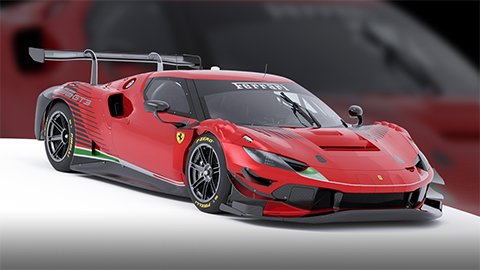
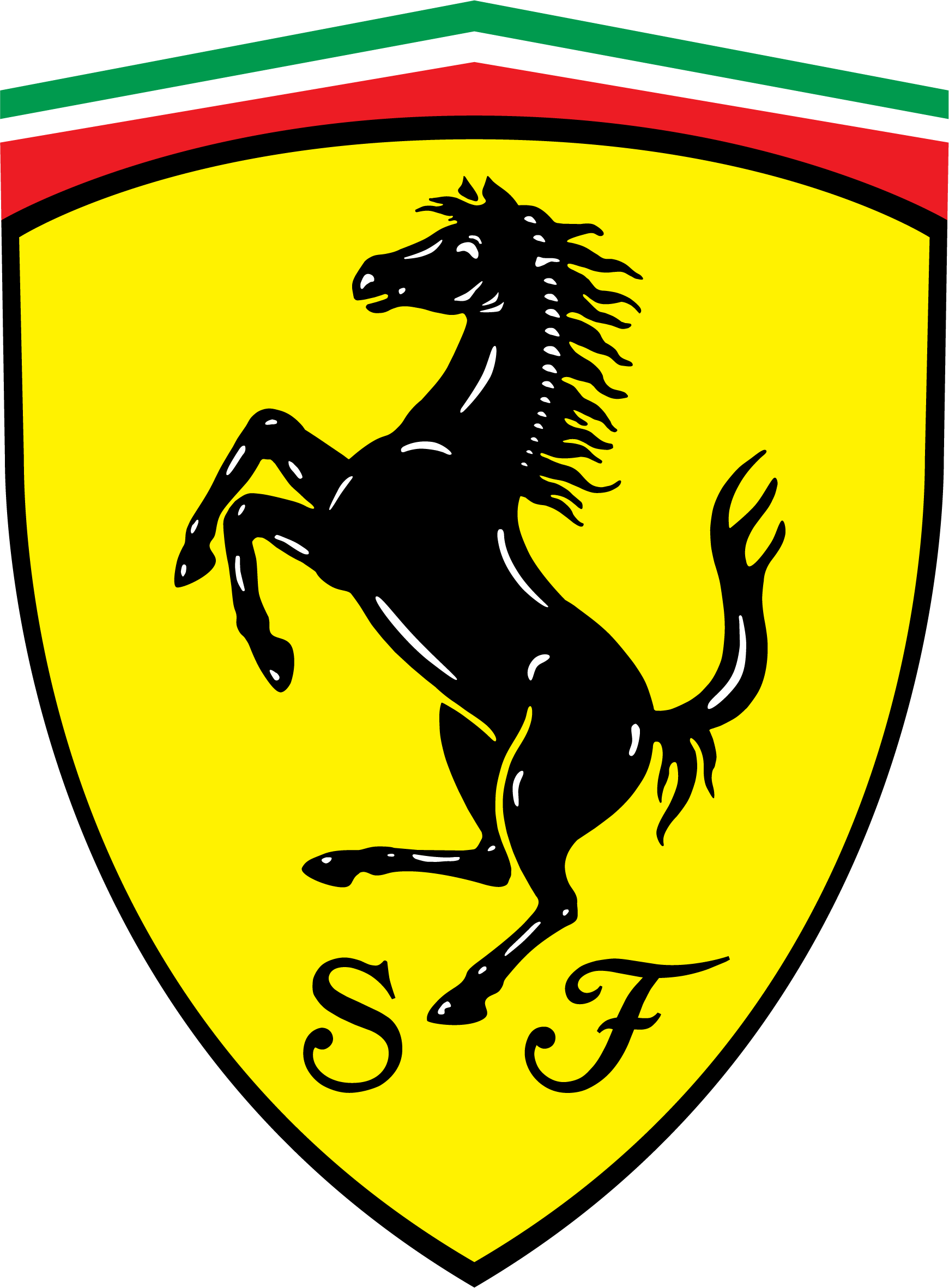
Ferrari's latest foray into GT3 racing, the 296 GT3 made its debut in the IMSA WeatherTech SportsCar Championship and other major global championships in time for the 2023 season. It succeeds the 488 GT3 EVO that made its debut in 2020, and it was designed to build on that car's successes with easier setup modifications for the crew and significantly more downforce than its predecessor. Powered by a V6 engine just like its road-going counterpart, the 296 GT3 is capable of producing 600 horsepower from its 2.9-liter powerplant. Four cars took to the track across IMSA's GTD and GTD Pro classes in its debut at the 24 Hours of Daytona, and the car took its first win in a twice-around-the-clock endurance race a few short months later at the Nürburgring. F163CE, 120° V6, 4 valves per cylinder, 2992 cm3, GDI Turbo WEIGHT: 524hp BORE/STROKE: 88 x 82 mm MAX POWER: around 600 Hp at 7250 rpm MAX TORQUE: around 712 Nm at 5500 rpm GREABOX: Transversal sequential gearbox, 6 speed e-clutch actuator with paddle on the steering wheel magnesium gearbox case with integrated oil catch tank TRACKS: 1726 mm front / 1710 mm rear WIDTH: 2050 mm max (without mirrors) WHEELBASE: 2660 mm WEIGHT (NO FUEL, NO DRIVER): 1350 kg (2976 lb) FRONT AND REAR SUSPENSION: Double wishbone, tubular steel suspension arms, aluminum uprights. 5 ways adjustable dampers RIMS: Front 12,5" x 18", Rear 13" x 18" TYRES: Front 30/68/18, Rear 31/71/18 BRAKE DISCS: Front Ø 400x36, Rear 332x32 BRAKE CALIPERS: Front 6 pistons, Rear 4 pistons BRAKE PADS: Front 30 mm, Rear 26.5 mm |


Audi R8 LMS EVO II GT3 A mainstay of GT3 events around the world for much of the past decade, Audi's R8 LMS received its second upgrade for the 2022 racing season with the introduction of the R8 LMS Evo II. Like its predecessor, the Evo I, the Evo II can either be bought new or as an upgrade kit for a previous generation model. Major improvements to the car included a new aerodynamics package that generated more downforce with the rear wing, a new engine intake system, and four-way adjustable dampers in the suspension. The R8 LMS Evo II showed its pace quickly in its first season, continuing a long line of successes for R8 LMS GT3 entries around the world. Highlights included three of the four fastest laps in qualifying for the Bathurst 12 Hour and continuing the brand’s long record of success in DTM by earning the 2022 manufacturer’s title with three race wins. The car remained ubiquitous toward the front of the pack in both sprint and endurance GT3 series around the world for the 2023 season. Normally aspirated V10 gasoline engine Cubic capacity: 5200 cc Power: Up to 430 kW (585 hp)* Torque: Over 550 Nm Type of drive: Rear-wheel drive Transmission: Sequential, pneumatically operated six-speed performance transmission with paddle shifters Dimensions: 4,599 / 1,997 / 1,171 Length / Width / Height (mm) Weight: 1,235 kg (2723 lbs) Fuel cell capacity: 120 l (32 gal) |
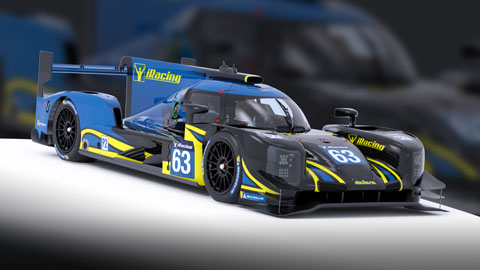

Dallara’s return to prototype racing for the first time since the original Audi R18 TDI, the P217 made its debut in 2017. The car competes in the LMP2 class in both the FIA World Endurance Championship and European Le Mans Series, while a Daytona Prototype International-spec version of the car raced at the top level of the IMSA WeatherTech SportsCar Championship with Cadillac branding until the GTP spec was adopted for 2023.
The LMP2 P217 is powered by a 4.2-liter Gibson V8, and features a six-speed sequential paddle shift transmission by Xtrac. Drivers who raced in the car in its 24 Hours of Le Mans debut included Formula 1 legend Rubens Barrichello, former Le Mans winner Jan Lammers, and IndyCar veteran Mikhail Aleshin. Other Formula 1 veterans who have driven the car at Le Mans include Felipe Nasr, Sergey Sirotkin, and Giedo van der Garde. Carbon-fibre monocoque with aluminium honeycomb and Zylon side panels Suspension: Double Wishbone Independent Pushrod Length: 4745mm Width: 1900mm Wheelbase: 3010mm Engine: Gibson GK-428 4.2 litre V8 Horsepower: 600 BHP Transmission: Xtrac P1159F 6-speed sequential semi-automatic paddle-shift Weight: 930kg Brakes: Brembo Carbon Disks |
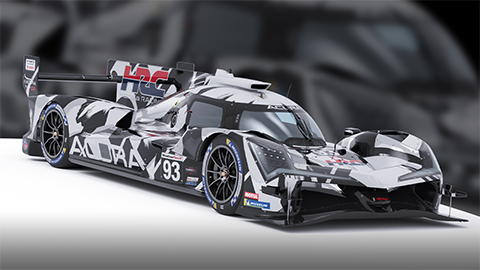

Built to the IMSA WeatherTech SportsCar Championship's new GTP regulations, the Acura ARX-06 debuted at the 2023 24 Hours of Daytona as a replacement for the ARX-05 that had run for five years under the previous DPi rule set. Acura continued its previous relationship with constructor Oreca to build the new car, which would debut in the hands of Meyer Shank Racing with Curb-Agajanian and Wayne Taylor Racing with Andretti Autosport; the teams would come roaring out of the gate by finishing 1-2 at Daytona. The ARX-06 features a 2.4-liter, twin-turbocharged V6 engine, smaller than its predecessor but packing a powerful punch at over 670 horsepower. As with other GTP cars, the car weighs 1,030 kg and features a spec 50kW hybrid system. Carbon fiber monocoque chassis manufactured by ORECA Bodywork: Acura-specific bodywork, aerodynamics and cooling systems Suspension: Double wishbone, pushrod suspension front and rear, Penske dampers Safety: FIA-specified roll cage structure, carbon fiber driver's seat shell, six-point safety harness, fresh air intake system, on-board fire suppression system Engine: Bespoke Acura 2.4-liter, twin-turbocharged, direct injected V6 internal combustion engine designed, developed and manufactured by HPD, mated to IMSA-specified electric Bosch Motor Generator Unit (MGU) and Williams Advanced Engineering battery pack HP: 667 hp Weight: 2447 lbs. Transmission: IMSA-specified XTrac six-speed, sequential, paddle-operated transmission, rear-wheel drive Dimensions: 5100mm length x 2000mm width x 1060mm height (above reference plane); 3148mm wheelbase |
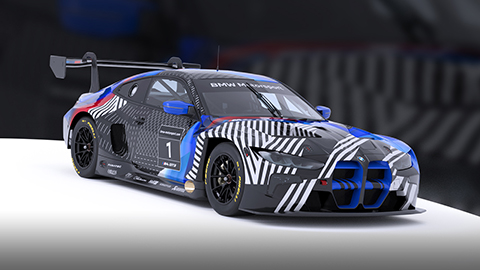

Revealed at BMW Sim Live in December 2020, the BMW M4 GT3’s reveal was a bridge between the virtual world and the real one—especially as its steering wheel could be removed from the real car and plugged directly into iRacing. The car received a pre-release on iRacing to give sim racers a taste of what to expect before it began competing in GT3 series around the world, and received updates in-sim to match its final form.
The BMW M4 GT3 succeeded the BMW Z4 GT3 as the second BMW to join iRacing’s GT3 offerings. It’s powered by a 3-liter twin turbo straight-six engine capable of producing 590 horsepower. Marked by traditional BMW styling cues, the M4 GT3 is as instantly recognizable as any of its predecessors both on track and off. 197.4" Overall width: 79.6" Height: 37.4" Wheelbase: 114.8" Front track: 61.1" Rear track: 62.2" Dry weight: 2833 lbs. Front tires: 325/680-18 Rear tires: 325/705-18 Brakes: Brembo racing calipers (6 piston front, 4 piston rear), full floating Brembo rotors Suspension: Front and rear double A-arms with coilovers; KW 4-way adjustable dampers; blade-adjustable front and rear anti-roll bars Drive-line: 6-speed sequential transaxle gearbox with pneumatic actuation Engine Configuration: Water-cooled inline 6 Location: Front, longitudinally mounted Construction: Aluminum alloy block and heads Displacement: 182.617 Valvetrain: 4 valves / cylinder, DOHC Fuel feed: Direct fuel injection Lubrication: Dry sump Aspiration: Turbocharged |


Lamborghini Huracán GT3 EVO
Decades of racing heritage come together in the Lamborghini Huracán GT3 EVO, Lamborghini's latest GT3 challenger in sports car racing series from around the world. Developed in house in Sant’Agata Bolognese by Lamborghini Squadra Corse, the Huracán GT3 EVO builds on the winning formula of its predecessor, the Huracán GT3, with improved aerodynamics developed in conjunction with Dallara and a powerful 5.2-liter V10 engine.
2020 was a banner year for the car, with a clean sweep of the IMSA WeatherTech SportsCar Championship's driver and team titles in both its full-season and endurance race standings for Paul Miller Racing. Across the Atlantic, Barwell Motorsport ran the car to Lamborghini’s first British GT title, while a class victory in the 24 Hours of Spa and multiple GT World Challenge victories rounded out a stellar season. 1285 kg Wet Weight (50% Fuel) with Driver: 1411 kg Displacement: 5.2 L Power: 500 hp Torque: 400 lb-ft Rev Limit: 8500 rpm Length: 4550 mm Width: 2050 mm Wheelbase: 2645 mm Front Track Width: 1710 mm Rear Track Width: 1660 mm |
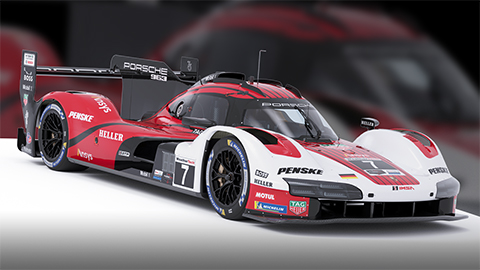

After a five-year hiatus from top-level prototype racing, Porsche returned to the discipline in 2023 with the all-new 963 for the IMSA WeatherTech SportsCar Championship's GTP class. Partnering with Multimatic to construct the chassis, the 963 made its racing debut at the 2023 24 Hours of Daytona with Porsche Penske Motorsport, and more teams have begun to adopt the car around the world as the season has continued. Penske's Mathieu Jaminet and Nick Tandy gave the car its first win at Long Beach in its third start of the IMSA season. Powered by Porsche's 4.6 liter, twin-turbocharged V8, the 9RD engine that powers the 963 makes over 670 horsepower. As with other GTP cars, the car weighs 1,030 kg and features a spec 50kW hybrid system. Double supercharged, twin-turbo 4.6L V8 combustion engine, 4 valves / cylinder, DOHC, Direct Fuel Injection Location: Mid, longitudinally mounted Weight: 1120 kg (2469 lb) Chassis: carbon-fibre and aluminium honeycomb monocoque Gearbox: XTrac. Single specification hybrid system, 7-speed racing transmission, pneumatically actuated Combined Power: 670 bhp / 500 kW @ 10,000 rpm |
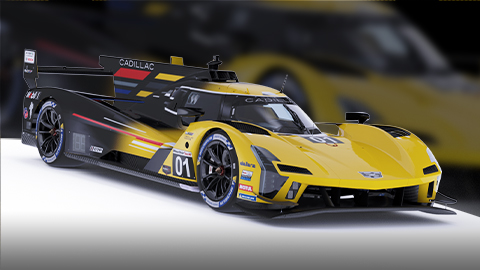
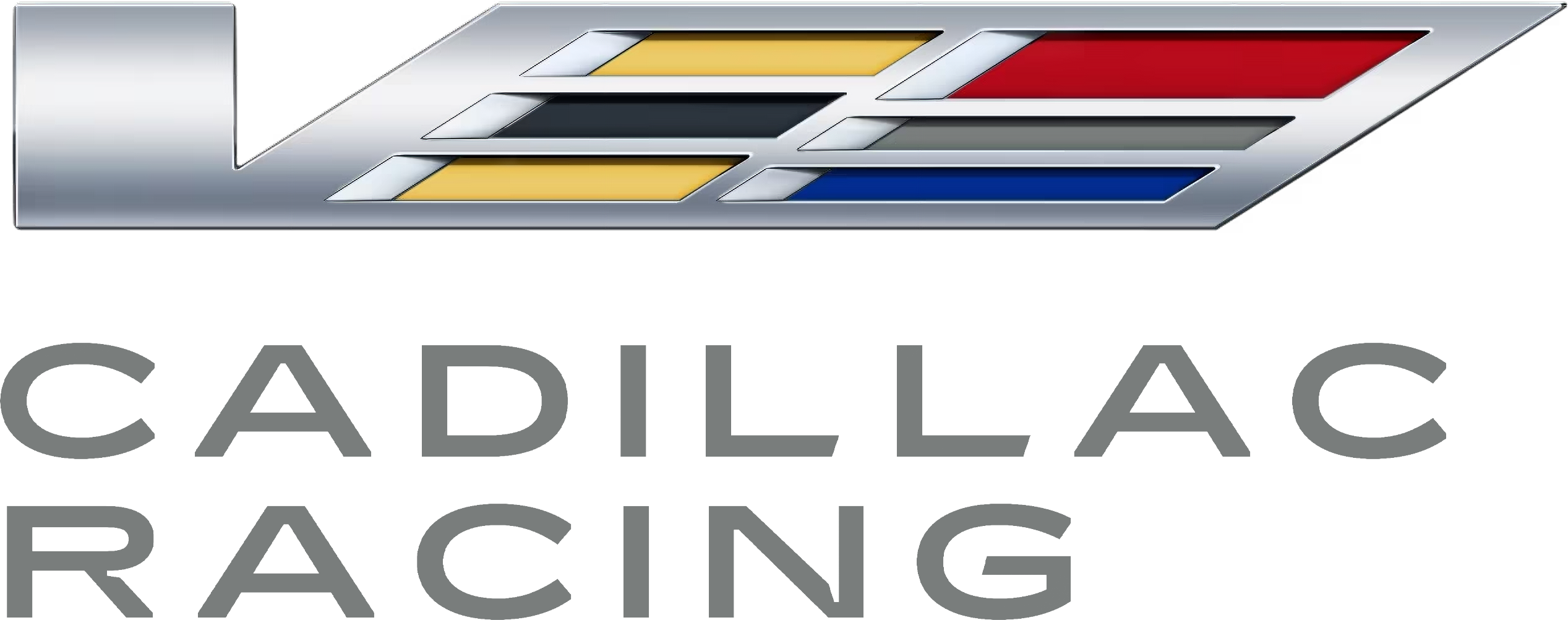
Cadillac V-Series.R GTP The Cadillac V-Series.R is General Motors' latest top-level prototype entry for global sports car competition. Built to the universal Le Mans Daytona h regulations that made their debut for the 2023 season, the V-Series.R was launched in both the IMSA WeatherTech SportsCar Championship with entries from Chip Ganassi Racing and Action Express Racing, and internationally with another Ganassi-run team. The Cadillac V-Series.R succeeds the Cadillac DPi-V.R, which scored five consecutive 24 Hours of Daytona wins from 2017 to 2021. Powered by a 5.5-liter V8, the V-Series.R has the largest engine of any cars to compete in the GTP class. It was able to score its first IMSA win in the 2023 12 Hours of Sebring with Alexander Sims, Pipo Derani, and Jack Aitken behind the wheel, recovering from an early incident and surviving a race of attrition in IMSA's hotly contested GTP class. 5.5 Liters DOHC V8 Induction: Naturally Aspirated Power: Series Specified up to 670 HP Gearbox: 7-Speed Sequential Lubrication: Dry Sump Weight: 1080 KG (2380 pounds) Electric Motor: Rear-mounted 50KW spec MGU supplied by Bosch Transmission: Xtrac P1359, 7-speed carbon-fibre plastics reinforced pneumatically actuated Tires: Michelin |
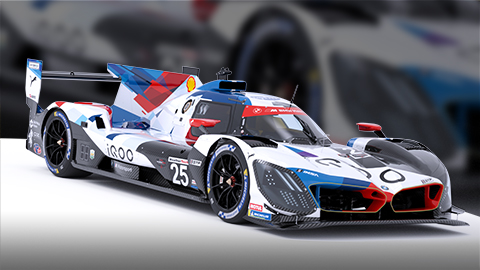

BMW's long-awaited return to the highest ranks of prototype racing comes in 2023, as the German manufacturer teams up with chassis partner Dallara and team partner Rahal Letterman Lanigan Racing to bring the BMW M Hybrid V8 to the IMSA WeatherTech SportsCar Championship. Built to a new set of global prototype regulations, two M Hybrid V8s will compete in IMSA's premier GTP class, but countless more reproductions of the car are set to debut on iRacing before its first racing lap. Years of coordinated efforts in both North America and Europe to create a unified top-level rule set have allowed top-tier manufacturers to return to the prototype ranks, with BMW becoming one of the first to announce its involvement. The M Hybrid V8 produces approximately 640 horsepower out of its four-liter powerplant alone, with its electric motor able to add even more boost. V-shaped Otto four-stroke twin-turbo engine Capacity: 3,999 ccm No. cylinders: 8 Cylinder construction: Cast aluminium cylinder block and cylinder head, cylinder lining as iron layer in LDS procedure V angle: 90° Bore: 93 mm Stroke: 73.6 mm Cylinder spacing: 102 mm Valves per cylinder: 4 Engine speed: max. 8,200 rpm Output (regulated): approx. 665 hp Torque: approx. 650 Nm Injection: High-pressure direct injection at 350 bar Oil system: Dry sump system with six-cell oil drain pump and oil tank Length: 5100 mm Wheelbase: 3150 mm |


Porsche 911 GT3 R (992) The latest in a long line of Porsche 911s built for sports car racing, the 992-spec edition of the Porsche 911 GT3 R follows in the footsteps of the 991-based GT3 R that debuted for the 2019 racing season. It also joins the current model of the Porsche 911 GT3 Cup car, which debuted in 2021, as a racing Porsche based on the 992 generation. In its inaugural IMSA WeatherTech SportsCar Championship season, five teams-Pfaff Motorsports, MDK Motorsports, Wright Motorsports, AO Racing Team, and Kelly-Moss with Riley-have all brought at least one 992 to the grid across the GTD and GTD Pro divisions. The 911 GT3 R (992) is powered by a 4.2-liter Porsche flat-six engine, a step up in displacement from the 4.0-liter units in the previous car. Its first IMSA win came at the hands of Pfaff's GTD Pro squad of Klaus Bachler, Patrick Pilet, and Laurens Vanthoor in the 2023 12 Hours of Sebring, and the duo of Bachler and Pilet backed it up the next month with a third place finish on the streets of Long Beach. Kelly-Moss with Riley took the car's first GTD podium at Sebring as well with Alec Udell, Julien Andlauer, and David Brule. Water-cooled six-cylinder boxer engine (rear mounted) based on 992 engine generation Single mass flywheel Four-valve technology Direct fuel injection Dry sump lubrication with oil/water heat exchanger Engine control unit (ECU) BOSCH MS 6.6 Race exhaust system with twin tailpipes mounted centrally Carbon fiber intake manifold and 6 throttle butterflies Catalytic converter Porsche Motorsport Traction Control Displacement: 4,194 cm3 Power: 416 kW/565 HP subject to FIA BoP classification Transmission: Six-speed constant-mesh gearbox Internal pressurized oil lubrication with heat exchanger Mechanical limited slip differential with adjustable preload mechanism Motorsport carbon clutch Electrohydraulic clutch actuator Paddle shift with electronic shift barrel actuator Integration of AC compressor and alternator mounted in front of gearbox Front axle: Double wishbone front suspension with hydraulicly power assisted steering Rear axle: Improved multilink independent rear suspension High-performance spherical bearings Wheel hubs with center lock wheel nuts Motorsport dampers; 5-way adjustable including blow-off Damper potentiometers Adjustable anti-roll bar blades (left & right) Shim adjustment system Brakes: Two separate brake-circuits for front and rear axles Six-piston (front) Four-piston (rear axle) aluminium-monobloc racing brake calipers Ventilated and grooved steel brake disc Motorsport brake pads Optimized brake cooling ducts Brake temperature sensors Improved BOSCH Race ABS Generation 5 Total weight: Approx. 1250 kg (subject to BoP) Overall length: 4,619 mm (without aerodynamic devices) Overall width front axle: 2,039 mm Overall width rear axle: 2,050 mm Wheelbase: 2,507 mm Wheels/Tires: One piece BBS alloy wheels, according to Porsche specification and design, 12.5 J x 18 (front); 13.0 J x 18 (rear) Michelin transport tires; tire dimensions: 30/68-18 (front); 31/71-18 (rear) |
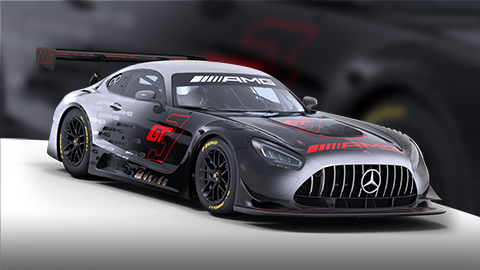

Mercedes-AMG GT3 2020
Since its introduction in 2015, the Mercedes-AMG GT3 has been one of sports car racing's most prominent challengers. The car took home five of the top six spots, including the top four, in the Nurburgring 24 Hours on its first try, and found success with Riley Technologies in the premier IMSA WeatherTech SportsCar Championship events at Daytona and Sebring shortly after.
For the 2020 season, the car received a slate of updates that included aerodynamic tweaks to the front splitter and rear wing and aesthetic updates to bring it closer in line with its roadbearing counterpart. Carrying over from its first iteration is the 6.3-liter V8 powerplant that produces 550 horsepower and sequential six-speed transmission. Now, the fully updated Mercedes-AMG GT3 comes to iRacing, and it's your chance to sample the next generation of German road racing performance. AMG 6.3-litre V8 naturally aspirated engine (6,208 cm³) Transmission: Sequential AMG 6-gear racing transmission Electronics: Motorsports electronics incl. multiple-adjustable ABS and AMG TRACTION CONTROL Wheels/Tires: AMG alloy wheels, 18", forged [FA 325 /680-18 / RA 325 /705-18] Brakes: [FA 390 mm/RA 355 mm] Brake balance configuration via beam Chassis: Double wishbone FA/RA Configurable motorsports rebound and pressure dampers, configurable stabilisers Weight: 1285 kg [2832.94 lb] Fuel Tank: 120 litres, motorsports safety tank Length: 4746 mm [186.85 inches] Width: 2049 mm [80.67 inches] Height: 1238 mm [48.74 inches] |







